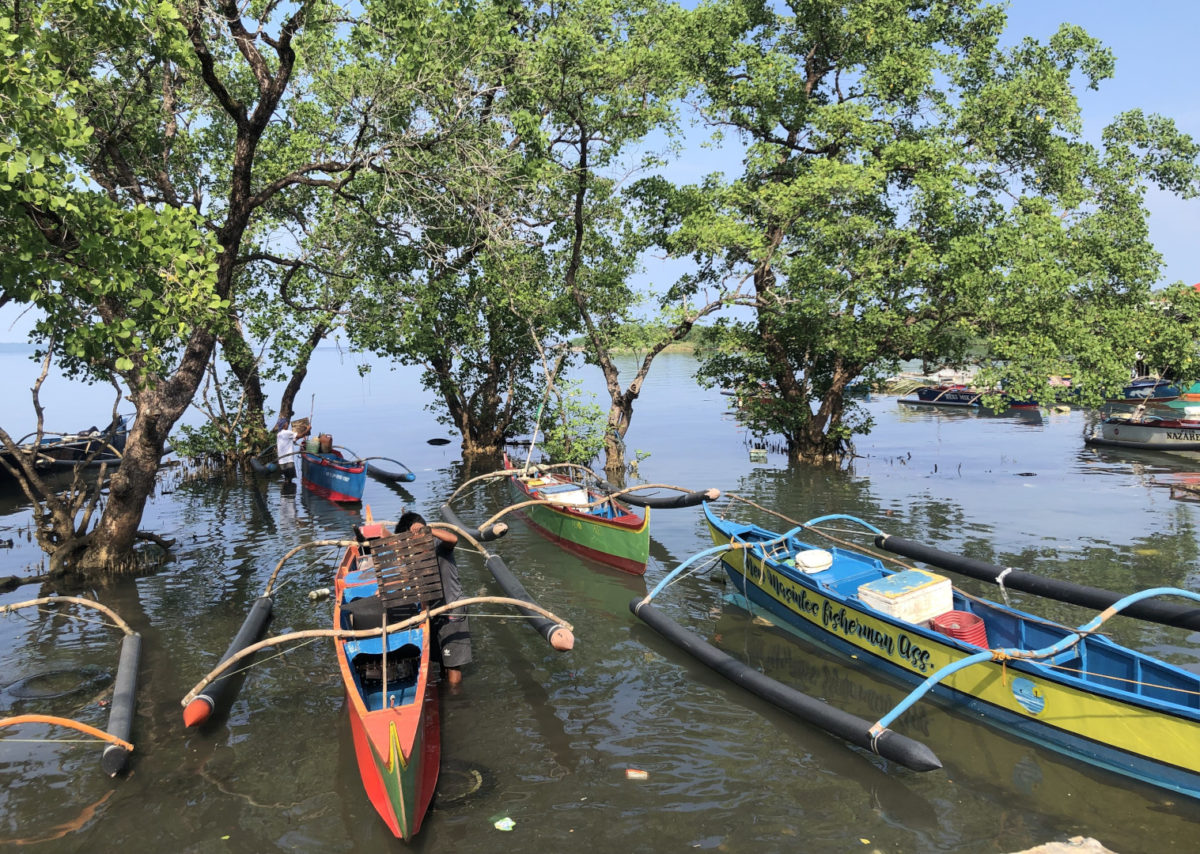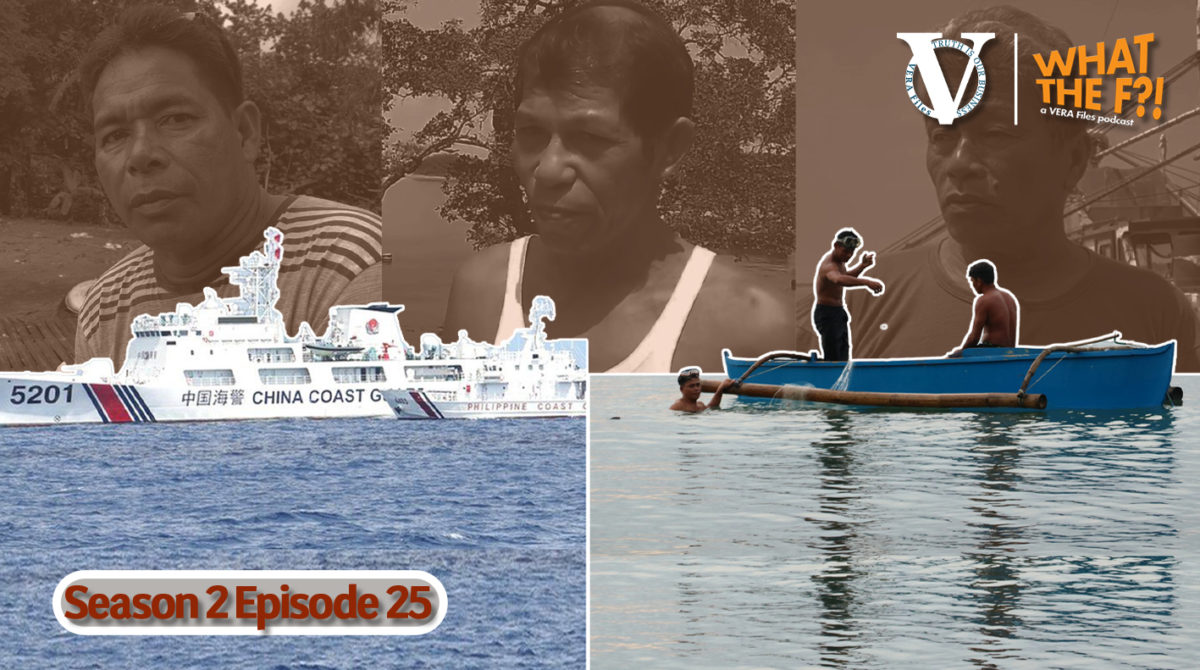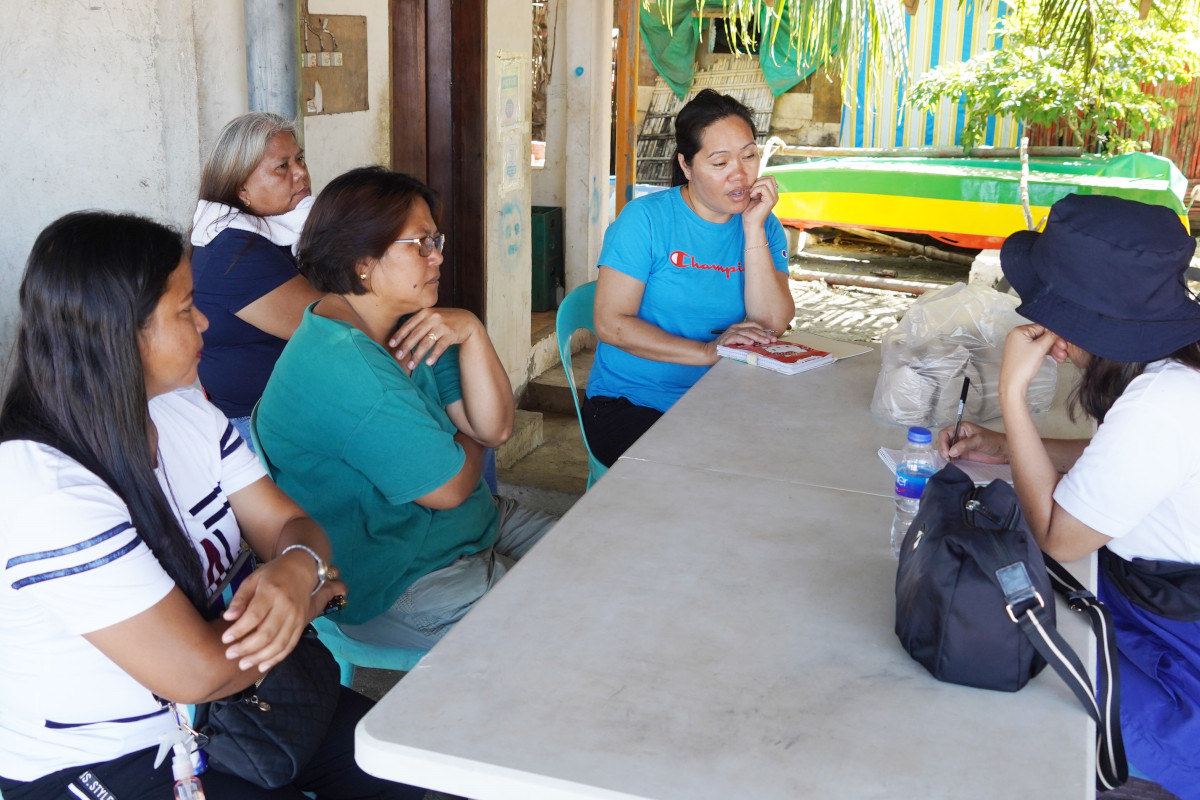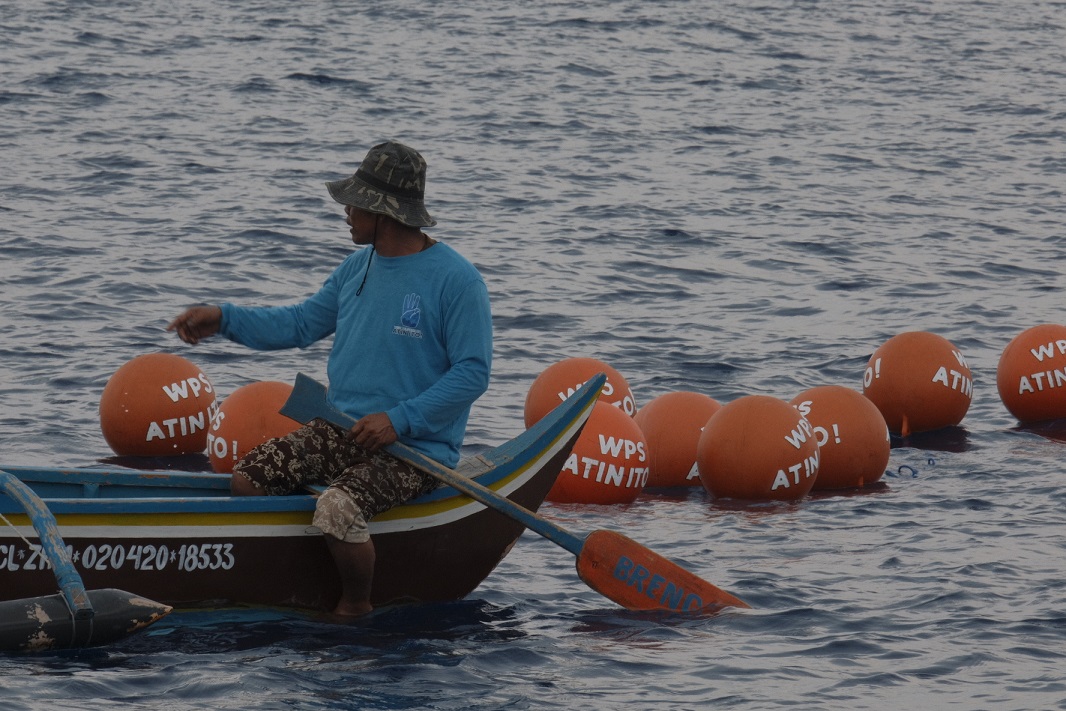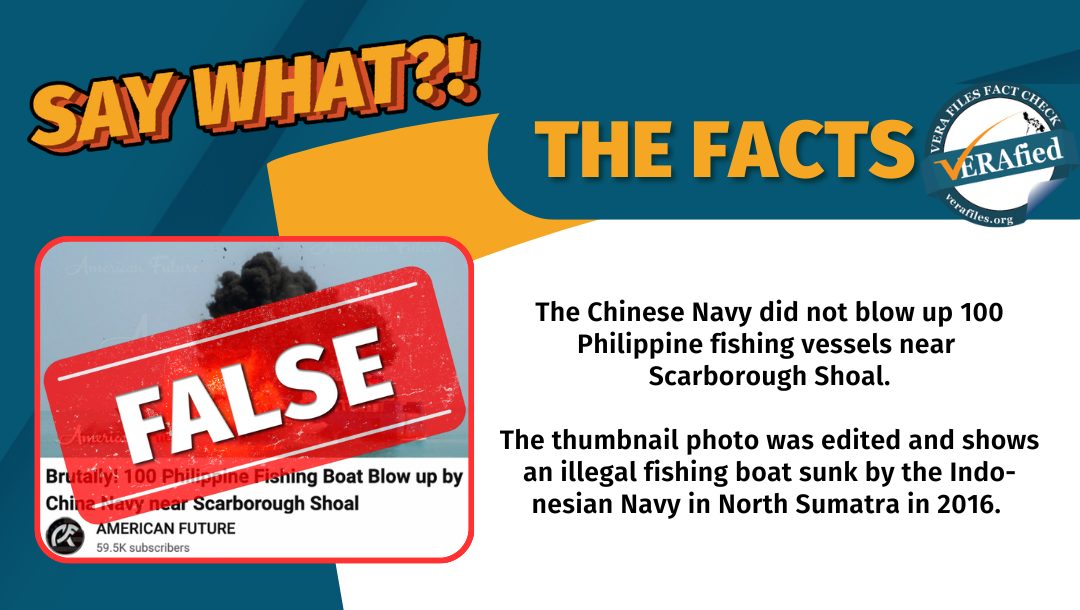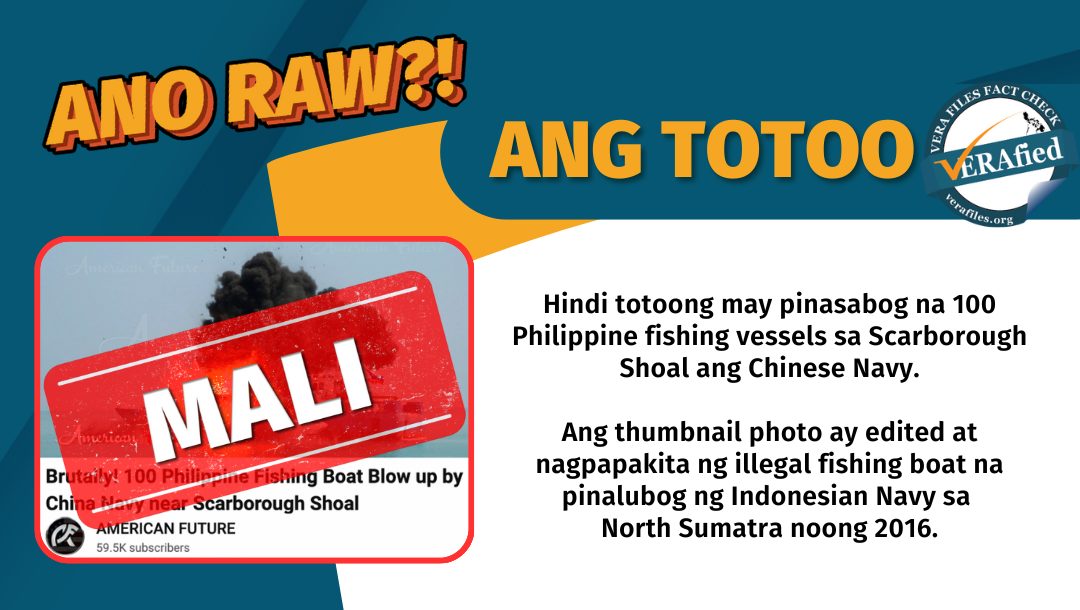To some small-scale fishermen in Zambales, Scarborough Shoal located 120 nautical miles off Masinloc town does not belong to the Philippines.
“Kung sa atin ‘yun, eh bakit kami hinaharangan ng Chinese coast guard, ayaw kami papasukin,” says William, whose main source of livelihood is fishing for almost four decades now.
I was part of a team of reporters and editors that VERA Files brought to Zambales on Sept. 14 to 18 for a seminar-worshop on Enhancing Media’s Capability to Raise Public Awareness on the Situation in the South China Sea supported by the Canadian Fund for Local Initiatives-Philippines.
During an informal conversation last weekend with William in the coastal barangay of Collat, he said he was losing hope that the Philippines will ever be able to win against China in the maritime dispute over Scarborough Shoal, which locals refer to as “Kalburo.”
“Paano ka naman mananalo eh ‘yung mga bangka namin ang liliit lang, eh ‘yung barko nila kalalake, tinitingala naming parang tore (How can you win over them when our boats are too little while we look up to their ship like a tower),” he laments.
Scarborough Shoal, also known as Panatag Shoal and Bajo de Masinloc, is a triangular-shaped chain of reefs and rocks around a 150-kilometer (km)-wide lagoon, 220 km from Masinloc, which is well within the 200-nautical mile (370 km) Philippine exclusive economic zone.
China calls it Huangyan Dao and lays claim to it purportedly based on historical rights.
Filipino fishermen used to enjoy a bountiful catch from the area and used it as a safe haven against storms before China’s coast guard and maritime militia vessels established a presence in the area and practically took control over the shoal.
“Papalapit pa lang kami itinataboy na kami. Hinahabol kami ng rubber boats hanggang lumayo na kami,” says William, who had sold his bigger boat and now uses a small one in fishing within municipal waters.
He used to join a team of small-scale fishermen for at least 18 hours of sailing to Bajo de Masinloc. Eight to 10 of them would load their small boats on what they call a mother boat, bringing with them food stock that would last a few days. Upon reaching the shoal, they would unload their small boats and start catching fish. “Kanya-kanyang diskarte na pagdating doon … Napakaraming isda; ilang oras lang halos mapuno na ‘yung bangka,” William recalls.
On a good day with a big catch, he could earn P10, 000 to P20, 000 from one trip to the shoal.
That is now a thing of the past.
These days, he is lucky if he can sell his catch for P2, 000 a day; often it’s just less than P1, 000.
In 2012, China asserted its sweeping claims in nearly all of the West Philippine Sea and seized control of the shoal, prompting the Philippines to seek UN arbitration. In 2016, the arbitral tribunal in The Hague invalidated China’s claims, but China continues to ignore the ruling.
Since then, Filipino fishermen are limited to fishing outside the perimeter of the shoal because China has taken control inside, says Leonardo Cuaresma, president of the New Masinloc Fishermen’s Association. They can’t even take shelter in the shoal during rough seas and bad weather, as they used to before 2012.
“Sa loob ng shoal, panatag doon pag malakas ang alon, pag masama ang panahon (Inside the shoal, [the water is] calm there when [there are] big waves [outside], when the weather is bad),” he says. “Ngayon, kahit gusto ng ating Filipino fishermen, hindi sila nabibigyan ng shelter dahil hinaharang sila ng Chinese coast guard (Nowadays, even when our Filipino fishermen want to seek shelter there, they could not because the Chinese coast guard is blocking them),” Leonardo adds.
The other fishermen we talked to said they were fearful of being apprehended by the Chinese coast guard, who are armed when accosting them as they attempt to approach the shoal.
They are chased away by armed Chinese maritime militia, making them feel like thieves if they make it inside the shoal.
Most of the fishermen in Barangay Collat say they are not teaching their sons how to fish because of the threats and intimidation they have experienced from the Chinese intruders, and the income they earn from it can hardly sustain a family.
This is reality on the ground. How can you convince them that Scarborough Shoal is ours when they have been shooed away even before they could get near its entrance? It’s like being prevented from entering your own house.
What used to be their traditional fishing grounds for decades, assuring them of plentiful catch and good income, has become a source of tension between the Philippines and China.
Intimidation and harassment by the Chinese coast guard have threatened not only their safety and main source of livelihood. Some are barely able to send their children to school, thanks to the government’s free education program and the assistance of the local government units and groups providing them with school supplies.
Their catch has become fewer and smaller, giving them not even a third of what they used to earn. As prices of basic commodities continue to rise and their incomes dwindle, daily survival is quite a challenge to most of them.
A number of the mother boats, which ferry the smaller boats to the lagoon, have been sold while a few which remained haggle for lower prices for the fishermen’s catch, leaving them with less income than what they should be getting. Competition at sea has also become tight as fishermen from other provinces catch from their payao, which attracts yellow fin tuna and other bigger species like blue marlin.
The Fisheries Code defines payao as a fish-aggregating device consisting of a floating raft anchored by a weighted line with suspended materials such as palm fronds to attract pelagic and schooling species common in deep waters.
How can you convince the fishermen to assert their rights to fish in Scarborough Shoal when their own government discourages them from doing so to avoid tension with the intruders?
The situation of other Filipino fishermen in other shoals, reefs and islands in the West Philippine Sea is no different from those in Zambales.
The views in this column are those of the author and do not necessarily reflect the views of VERA Files.
This column also appeared in The Manila Times.
